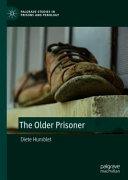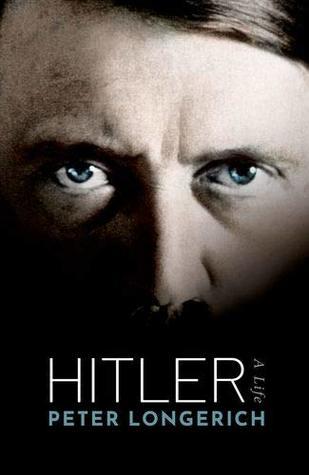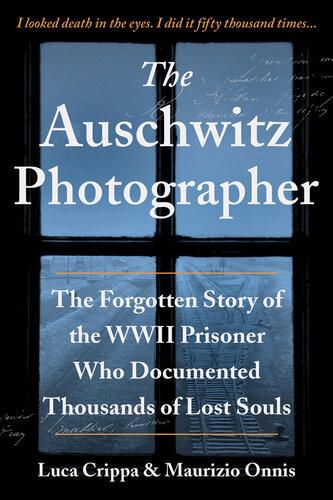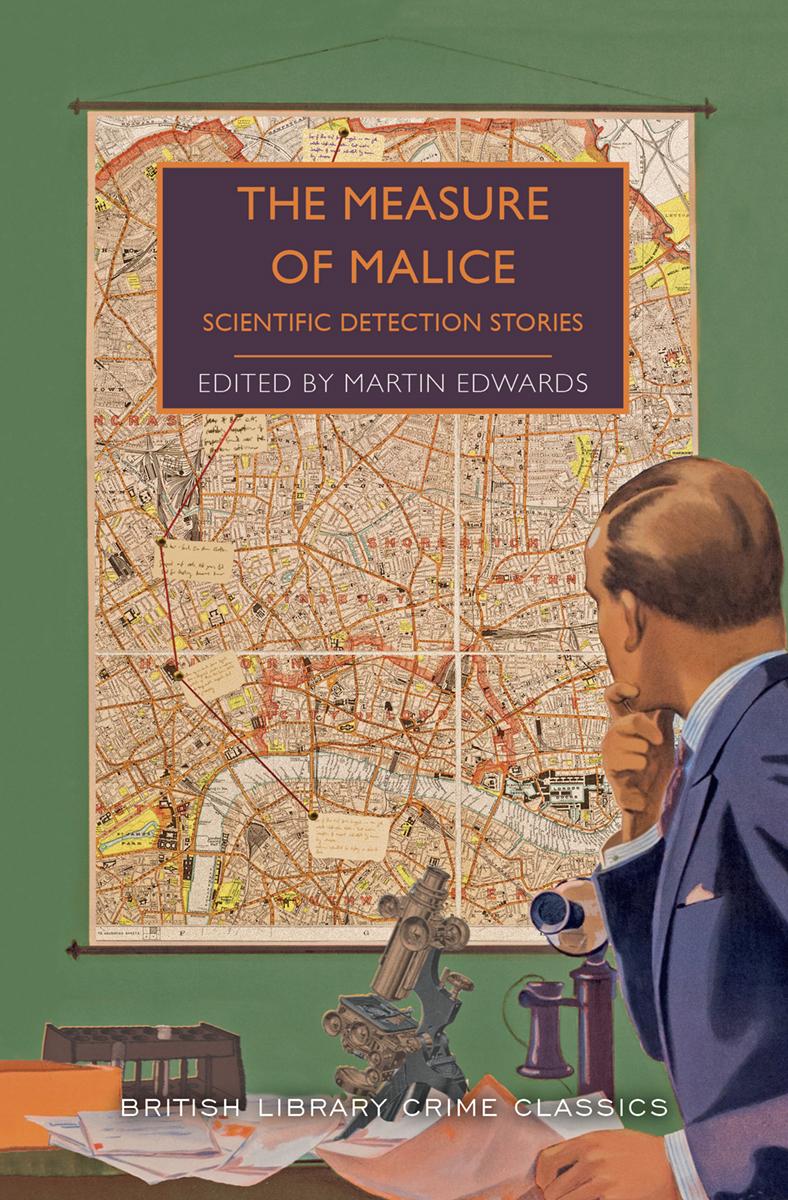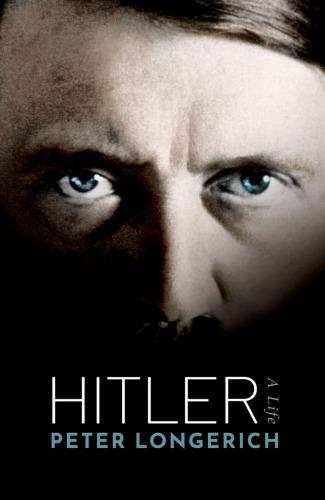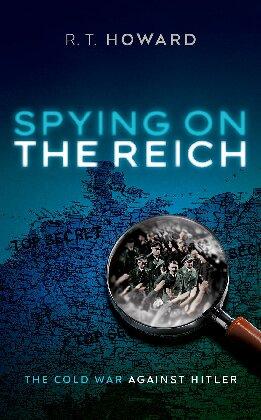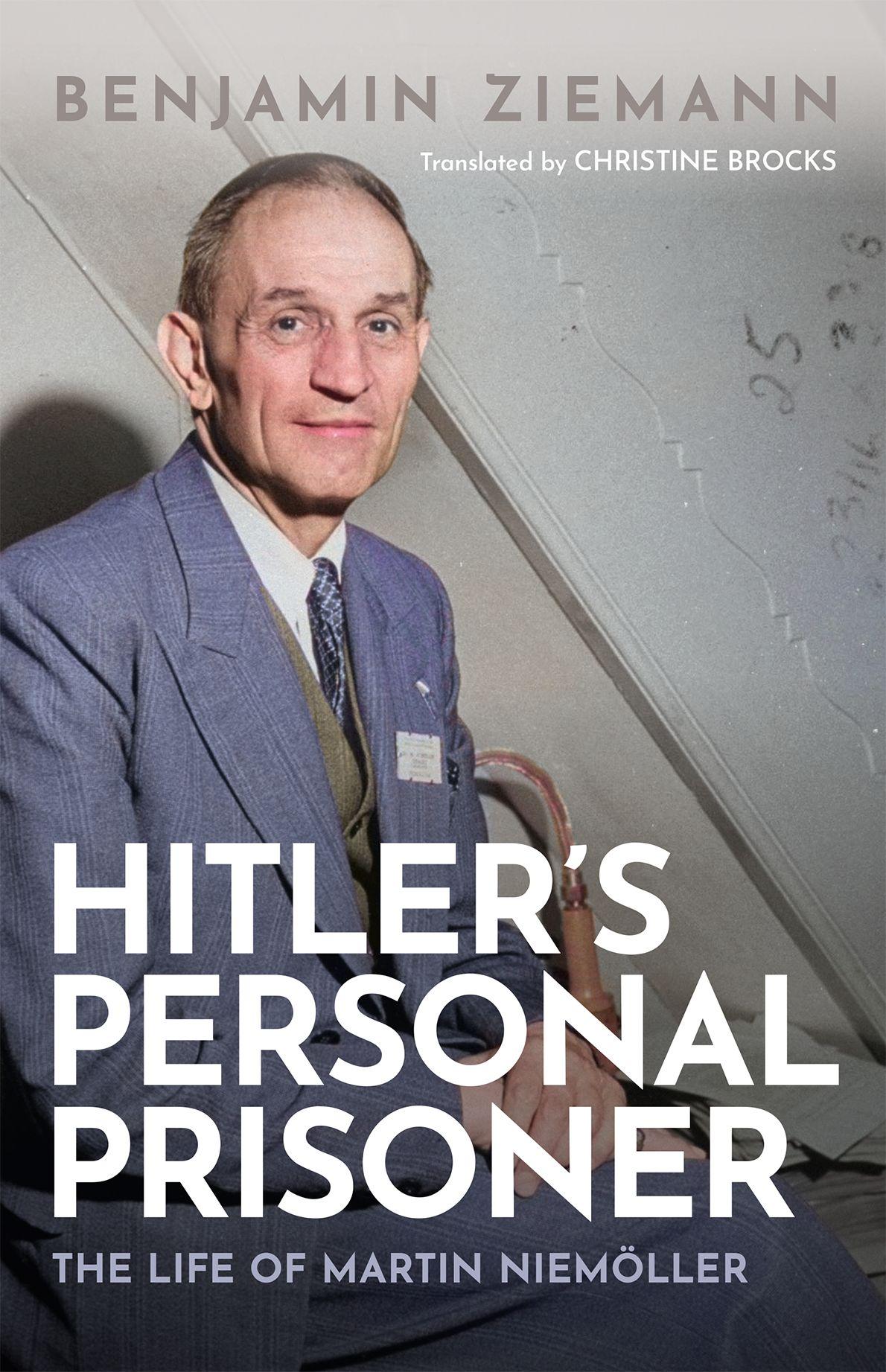Hitler's Personal Prisoner: The Life of Martin Niemöller Ziemann Visit to download the full and correct content document: https://ebookmass.com/product/hitlers-personal-prisoner-the-life-of-martin-niemoller-z iemann/
More products digital (pdf, epub, mobi) instant download maybe you interests ...
The Older Prisoner 1st Edition Diete Humblet
https://ebookmass.com/product/the-older-prisoner-1st-editiondiete-humblet/ Hitler: A Biography Peter Longerich
https://ebookmass.com/product/hitler-a-biography-peter-longerich/
The Auschwitz Photographer: The Forgotten Story of the WWII Prisoner Who Documented Thousands of Lost Souls Crippa
https://ebookmass.com/product/the-auschwitz-photographer-theforgotten-story-of-the-wwii-prisoner-who-documented-thousands-oflost-souls-crippa/
1931: Debt, Crisis, And The Rise Of Hitler 1st Edition Edition Tobias Straumann
https://ebookmass.com/product/1931-debt-crisis-and-the-rise-ofhitler-1st-edition-edition-tobias-straumann/
The Auschwitz Photographer: The Forgotten Story of the WWII Prisoner Who Documented Thousands of Lost Souls
Luca Crippa
https://ebookmass.com/product/the-auschwitz-photographer-theforgotten-story-of-the-wwii-prisoner-who-documented-thousands-oflost-souls-luca-crippa/
The Measure of Malice Martin Edwards
https://ebookmass.com/product/the-measure-of-malice-martinedwards/
Hitler: A
Biography 1st Edition Peter Longerich https://ebookmass.com/product/hitler-a-biography-1st-editionpeter-longerich/
The Developmental Psychology of Personal Identity Massimo Marraffa
https://ebookmass.com/product/the-developmental-psychology-ofpersonal-identity-massimo-marraffa/
Spying on the Reich: The Cold War Against Hitler R. T. Howard
https://ebookmass.com/product/spying-on-the-reich-the-cold-waragainst-hitler-r-t-howard/
Hitler’sPersonalPrisoner Hitler’sPersonal Prisoner TheLifeofMartinNiemöller BENJAMINZIEMANN Translatedby CHRISTINEBROCKS
GreatClarendonStreet,Oxford,OX26DP, UnitedKingdom
OxfordUniversityPressisadepartmentoftheUniversityofOxford. ItfurtherstheUniversity’sobjectiveofexcellenceinresearch,scholarship, andeducationbypublishingworldwide.Oxfordisaregisteredtrademarkof OxfordUniversityPressintheUKandincertainothercountries ©Englishlanguagetranslation©OxfordUniversityPress2024
Originaltitle: MartinNiemöller:EinLebeninOpposition,byBenjaminZiemann ©2019byDeutscheVerlags-Anstalt,adivisionofPenguinRandomHouse VerlagsgruppeGmbH,München,Germany
Themoralrightsoftheauthorhavebeenasserted Allrightsreserved.Nopartofthispublicationmaybereproduced,storedin aretrievalsystem,ortransmitted,inanyformorbyanymeans,withoutthe priorpermissioninwritingofOxfordUniversityPress,orasexpresslypermitted bylaw,bylicenceorundertermsagreedwiththeappropriatereprographics rightsorganization.Enquiriesconcerningreproductionoutsidethescopeofthe aboveshouldbesenttotheRightsDepartment,OxfordUniversityPress,atthe addressabove
Youmustnotcirculatethisworkinanyotherform andyoumustimposethissameconditiononanyacquirer
PublishedintheUnitedStatesofAmericabyOxfordUniversityPress 198MadisonAvenue,NewYork,NY10016,UnitedStatesofAmerica
BritishLibraryCataloguinginPublicationData Dataavailable
LibraryofCongressControlNumber:2023937958
ISBN978–0–19–286258–7
DOI:10.1093/oso/9780192862587.001.0001
PrintedandboundintheUKby ClaysLtd,ElcografS.p.A.
LinkstothirdpartywebsitesareprovidedbyOxfordingoodfaithand forinformationonly.Oxforddisclaimsanyresponsibilityforthematerials containedinanythirdpartywebsitereferencedinthiswork.
Thetranslationofthisbookhasbeenfundedby GeisteswissenschaftenInternational TranslationFundingforHumanities andSocialSciencesfromGermany.AjointinitiativeoftheFritzThyssen Foundation,theGermanFederalForeignOffice,thecollectingsociety VGWORT,andtheGermanPublishers&BooksellersAssociation.
Acknowledgements Thisbookwas firstpublishedinGermanywithDeutscheVerlags-Anstalt.Forthe Englishtranslation,Ihavemadeconsiderablecutsandrewrittensomepassages. Iamindebtedto GeisteswissenschaftenInternational ,ajointinitiativebytheFritz ThyssenFoundation,theGermanFederalForeignOffice,theGermanCollecting SocietyVGWortandtheBörsenvereindesdeutschenBuchhandels,whichhas recognizedmybookwithoneofitsawardsandfundedthetranslation.AtOxford UniversityPress,StephanieIrelandcommissionedmybook.Stephanie,Matthew CottonandCathrynSteeleofferedexpertadviceandcheerfulsupportallalongthe way.Thanksalot!
DuringtheresearchforthisbookIhaveaccumulatedagreatdebtofgratitude. I firstwanttothankinstitutionsthatprovidedcrucialmaterialsupport.TheGerda HenkelFoundationgenerouslyfundedresearchleaveviaitsMAN4HUMAN programme.ThomasMergelwasmyhostduringtheleavefundedbytheGerda HenkelFoundation.HischairandtheFacultyforHistoryatHumboldtUniversity Berlinofferedfurthersupport.Thomashimselfaswellasstaffathischair,namely ClaudiaGatzka,FeliciaKompio,DagmarLissat,MariaNeumann,andDominique Rudin,mademystayinBerlinequallyhospitableandmemorable.NorbertFrei, FrankaMaubach,andKristinaMeyerprovidedtimetogotoarchivesandreflect onmy findingsatalaterstageviatheJenaCentreforTwentiethCenturyHistory. Myacademichome,theDepartmentofHistoryattheUniversityofShef field, offeredbothmaterialandintellectualsupport.IamespeciallygratefultoJames ShawandAdrianBingham,mycurrentandpastHeadofDepartment,respectively,mymentorBobMoore,andmycolleaguesMiriamDobson,TomLeng, SaurabhMishra,andDanicaSummerlin.Atvariousstages,AlrunBerger, AlessandraExter,andWenzelSeiboldprovidedpracticalresearchsupport.
Iamgratefultofriendswhotookthetimetocommentondraftchapters, namelyJoanBrüggemeier,DanielGerster,BenjaminLahusen,ChristophNübel, andFriedrichVeitl.MoritzFöllmerreadandcommentedonafulldraft.His trailblazingandhighlyinnovativescholarshiphascontinuedtoinspiremeover manyyears.MarkRuffgenerouslyofferedadviceonchaptersinEnglishtranslation.IamindebtedtoChristineBrocksforhermeticuloustranslationofmy Germanmanuscript.Thisbookisprimarilybasedonresearchinaltogether28 archivesintheFederalRepublic,theUK,andSwitzerland.Iamgratefultothe archivistswhoguidedmethroughtheircollections,especiallyJensMurken, KerstinStockhecke,andPeterZocher.AttheEvangelischesZentralarchivin Berlin,HenningPahlnotonlyprovidedfriendlyadviceandgood-humoured
conversation,butalsocoffeeandcookies thankyou!Duringmyresearch, Iuncoveredthebook-lengthmanuscriptwithreflectionsonthehistoryofthe ChristianChurchthatNiemöllerwroteinSachsenhausenconcentrationcampin 1939.IhavegreatlybenefittedfromcollaboratingwiththetheologianAlf Christophersenaswepreparedthemanuscriptforpublication.
Overtheyears,manyotherscholarsprovidedideasorcopiesoftheirowntexts, pointedoutprimarysources,patientlyansweredmyquestionsorshapedmy thinkingabouttwentieth-centuryProtestantisminotherways.Iwouldliketo thankReinerAnselm,NicolasBerg,ThomasBrodie,SimonDitchfield,Manfred Gailus,AndreasGestrich,MartinH.Geyer,BeatricedeGraaf,CarolaGroppe, ThomasGroßbölting,ChristaHämmerle,WolfgangHardtwig,Gerardden Hertog,MatthewHockenos,PeterJelavich,PeterKrumeich,ThomasKühne, ClaudiaLepp,HughMcLeod,ArieL.Molendijk,ArminNolzen,Andrew Oppenheimer,DetlefPollack,AndrewPort,TillvanRahden,MichaelRoper, HelmutW.Smith,NickStargardt,SybilleSteinbacher,CaseyStrine,ToddWeir, AndreasWeiß,andJonathanWright.KindlyinvitedbyThomasGroßböltingand UlrichPfistertospeakattheUniversityofMünsteraboutNiemöller,Ihadan opportunitytochatwiththelateMartinGreschat,thedoyenofProtestantchurch historyintheFederalRepublic.Greschat’smanyimportantbooksandarticles haveleftacrucialmarkonmythinking,andtheirtracescanbefoundalloverthis book.IamgratefultoAmandaBehm(UniversityofYork),FelixSchnell (UniversityofEssex),AgnesOhm(MuseumundGedenkstätteSachsenhausen), YokoKitamura(NagoyaUniversity),andMakikoTakemoto(HiroshimaPeace Institute),whogavemeotheropportunitiestotestmyideasindiscussionwith interestedaudiences.Iwouldalsoliketothank fiveseniorscholarswhoseown research,advice,andcontinuoussupporthasbeencrucialformycareerasa historian:RichardBessel,MichaelGeyer,IanKershaw,DieterLangewiesche,and JosefMooser.
Finally,Iwouldliketoexpressmygratitudetomyfamily.Mybrother Alexander,hiswife,ChristianeHeiß,andtheirdaughterIrinaofferedmea homeduringmyextensiveresearchstaysinBerlin.BackatSheffield,mywife ChristineandourchildrenSophieandJonathanwereputtingupwithmy extendedabsences.Eversincethedraftoftheintroductionhadbeenwritten, SophieandJonathankeptaskingmewhythebookwasstillnotcompleted.They callthat ‘happybanter’,andIdolovethemnotonlyfortheirveryBritishsenseof humour.
BenjaminZiemann Sheffield, February2023
ListofIllustrations ix
ListofAbbreviations xi
NoteonTerminologyandTranslations xv Introduction1
I.PROTESTANTNATIONALISMINIMPERIAL GERMANYANDWEIMARREPUBLIC
1.ChildhoodandYouthinaParsonage11
2.OfficerCandidateintheImperialNavy20
3. ‘MayGodPunishEngland’:NationalismandtheGreat War1914–191835
4.TheologicalStudiesandCounter-Revolution1919–192354
5.InnerMissionandPeople’sCommunity1924–193172
6.AsaParishPriestinBerlinDahlem1931–193287
II.CHURCHQUARRELSANDCRISISOF FAITHINTHETHIRDREICH
7.TheNaziSeizureofPowerin1933asa ‘ProtestantExperience’ 103
8.TheBeginningoftheChurchQuarrel120
9.BuildingtheConfessingChurch,1934139
10.TheSplitoftheConfessingChurch1935–1936161
11.ArrestandTrial1937–1938181
12. ‘Hitler’sPersonalPrisoner’:ImprisonedinConcentrationCamps198
III.CHURCHPOLITICS,PEACEACTIVISM, ANDECUMENICALWORKFROM1945
13.NewBeginnings Delayed237
14.RebuildingtheProtestantChurch252
15.ThePoliticalPastor:NiemöllerasaCriticoftheFederalRepublic274
16.Pacifism:NiemöllerandtheFightagainstNuclearArmament291
17. ‘TheWorldIsMyParish’:EcumenicalWork310
18.HopesandDisappointmentsinOldAge325 Conclusion336
ListofIllustrations 1.HeinrichNiemöllercelebratesChristmaswithhisfamilyontheeveofthe FirstWorldWar.HerbertMochalski(ed.), DerManninderBrandung. EinBildbuchumMartinNiemöller (FrankfurtamMain,1963),17.14
2.TheCrew1910infrontoftheNavalSchoolinFlensburg-Mürwik. Niemölleristhethirdfromtherightinthefrontrow,kneeling. MarineschuleMürwik/WGAZ.25
3.MartinNiemöller(left)andhisclosefriendHermannBremer,1911–12. HerbertMochalski(ed.), DerManninderBrandung.EinBildbuchum MartinNiemöller (FrankfurtamMain,1963),18.30
4.Niemölleronboardthe SMSThüringen, c.1913.UnitedStatesHolocaust MemorialMuseum.41
5.MartinNiemöller standinginthemiddle withthecrewofUC-67in Kielharbour,29November1918.bpkno.30017355.57
6.MartinandElseNiemöllerwithsomeoftheirrelativesinthe TecklenburgLand,1919.HerbertMochalski(ed.), DerManninder Brandung.EinBildbuchumMartinNiemöller (FrankfurtamMain,1963),22.59
7.ThethreeDahlempastorsMartinNiemöller,FriedrichMüller,and FranzHildebrandtattheConfessingsynodoftheDEKinBarmen, May1934.ekir.de/Archiv/SusannePfannschmidt.147
8.MartinNiemöller,herein1917intheofficeruniformoftheImperial NavywiththeIronCrossandotherbadgesofhonouronhischest, boldlyandproudlylookingintothecamera.MartinNiemöller, VomU-BootzurKanzel (Berlin,1934),frontispiece.152
9.MartinNiemöllerwrotethiscardtoErichProske,agoodacquaintance fromhisDahlemparish,on11August1937.Privatepossession, DrAlejandroZorzin,Göttingen.189
10.GeorgeBell(left)andFranzHildebrandt(centre)infrontof StMartin-in-the-FieldsinLondonon1July1941afteranintercession servicefortheimprisonedNiemöller.bpkno.00103118.213
11.SSObersturmführerEdgarStillerwasinchargeofthespecialprisoners inthe Zellenbau orbunkerofDachauconcentrationcamp. StaatsarchivMünchen,Staatsanwaltschaften34475/5.226
12.On18September1941,HelmutGollwitzer hereinWehrmacht uniform ,his fiancée,theactressEvaBildt,andElsievonStryk accompaniedElseNiemöller(centre)toDachauconcentration camptovisitherhusband.EZA500/17936.228
13.MartinNiemöllerandOttoDibelius,1945.EZA500/4221.262
14.MartinNiemölleratananti-nuclearvigilinCologneon6August1958. ©AKGImages,AKG75258.301
15.TheCommitteeforPeace,Disarmament,andCooperation,controlled bytheDKP,theWestGermanCommunistParty,publishedthisposter in1984,shortlyafterNiemöller’sdeath.ArchivdersozialenDemokratie Bonn,6/PLKA014071.329
Everyefforthasbeenmadebytheauthortosecurepermissionsfortheimagesusedinthe book.Ifyoubelievethatyouholdcopyrightinanyofthesehistoricalimages,pleaseapplyin writingtoOxfordUniversityPress,andwewilladdyourcopyrightinformationtoany futureprintingsofthisbook.
ListofAbbreviations ADEArchivfürDemokratieundEntwicklung
AdsDArchivdersozialenDemokratie
AEMArchivdesErzbistumsMünchenundFreising
AKAmtskalender(diary)MartinNiemöller(archivedinZEKHN,62/6096 and6097)
AKGArchivderKirchengemeinde
ApUEvangelischeKirchederaltpreußischenUnion(ProtestantChurchofthe OldPrussianUnion)
BArchBundesarchiv
BdDBundderDeutschen(AllianceofGermans)
BKBekennendeKirche(ConfessingChurch)
BMVtgBundesministeriumderVerteidigung
BStUBundesbeauftragterfürdieStasi-Unterlagen
CACentral-AusschussderInnerenMission(CentralCommitteeforInner Mission)
CDUChristlichDemokratischeUnion(ChristianDemocraticUnion)
CNDCampaignforNuclearDisarmament
CSUChristlich-SozialeUnion(Christian-SocialUnion)
CSVDChristlich-SozialerVolksdienst(Christian-SocialPeople’sService)
CVDChristlicherVolksdienst(ChristianPeople’sService)
DCDeutscheChristen(GermanChristians)
DEKDeutscheEvangelischeKirche(GermanProtestantChurch)
DFGDeutscheFriedensgesellschaft(GermanPeaceSociety)
DFG-VKDeutscheFriedensgesellschaft-VereinigteKriegsdienstgegner(German PeaceSociety–UnitedWarResisters)
DGBDeutscherGewerkschaftsbund(GermanTradeUnionConfederation)
DKPDeutscheKommunistischePartei(GermanCommunistParty)
DNVPDeutschnationaleVolkspartei(GermanNationalPeople’sParty)
DVPDeutscheVolkspartei(GermanPeople’sParty)
DVSTB DeutschvölkischerSchutz-undTrutzbund (German-VölkischProtection andDefianceFederation)
ECPCEcumenicalCouncilforPracticalChristianity
EDCEuropeanDefenceCommunity
EKDEvangelischeKircheinDeutschland(ProtestantChurchinGermany)
EKHNEvangelischeKircheinHessenundNassau(ProtestantChurchinHesse andNassau)
ELABEvangelischesLandeskirchlichesArchivinBerlin
ENElseNiemöller
EOKEvangelischerOberkirchenrat(EvangelicalSupremeChurchCouncil)
EZAEvangelischesZentralarchiv
FAZ FrankfurterAllgemeineZeitung
FCCFederalCouncilofChurches
FoRFellowshipofReconciliation
GKRGemeindekirchenrat(parishcouncil)
GSAGedenkstätteSachsenhausenArchiv
GStAPKGeheimesStaatsarchivPreußischerKulturbesitzBerlin
GVPGesamtdeutscheVolkspartei(AllGermanPeople’sParty)
HABHauptarchivdervonBodelschwinghschenAnstaltenBethel
HNHeinrichNiemöller
IdKInternationalederKriegsdienstgegner(Germansectionofthe WarResisters’ International)
IfZInstitutfürZeitgeschichteMünchen,Archiv
JKJungeKirche
KBAKarlBarthArchiv
KOFAZKomiteefürFrieden,AbrüstungundZusammenarbeit(Committeefor Peace,Disarmament,andCooperation)
KPDKommunistischeParteiDeutschlands(CommunistPartyofGermany)
LABLandesarchivBerlin
LAVNRWWLandesarchivNordrhein-Westfalen,Abt.Westfalen
LAVNRWRLandesarchivNordrhein-Westfalen,Abt.Rheinland
LkALandeskirchlichesArchiv
LKALandeskirchenausschuss(RegionalChurchCommittee)
LkAEvKvWLandeskirchlichesArchivderEvangelischenKirchevonWestfalen
LPLLambethPalaceLibrary
MfAAMinisteriumfürAuswärtigeAngelegenheitenderDDR
MNMartinNiemöller
NDONationalverbandDeutscherOffiziere(NationalFederationofGerman Officers)
NKVDPeople’sCommissariatforInternalAffairs
OKWOberkommandoderWehrmacht(HighCommandoftheWehrmacht)
OSSOfficeofStrategicServices
PA/AAPolitischesArchivdesAuswärtigenAmtes
PNBPfarrernotbund(Pastors’ EmergencyLeague)
PPUPeacePledgeUnion
RBRReichsbruderrat(ReichCouncilofBrethren)
RJMReichsministeriumderJustiz(ReichMinistryofJustice)
RKAReichskirchenausschuss(ReichChurchCommittee)
SAPMOStiftungArchivderParteienundMassenorganisationenderDDRim Bundesarchiv
SDSicherheitsdienst(SecurityService)
SEMartinNiemöller,minutesofthe Sprecherlaubnis,i.e.thevisitsofhis wifetotheConcentrationCampsSachsenhausenandDachauon[date] (archivedin:ZEKHN,62/6179)
SDHASD-Hauptamt
SEDSozialistischeEinheitsparteiDeutschlands(SocialistUnityPartyof Germany)
SHAEFSupremeHeadquarters,AlliedExpeditionaryForce
SOVOSeeoffizier-VereinigungOstsee(NavalOfficers ’ Association,BalticSea)
SOZSovietOccupationZone
SPDSozialdemokratischeParteiDeutschlands(SocialDemocraticPartyof Germany)
StAMStaatsarchivMünchen
UAMsUniversitätsarchivMünster
USPDUnabhängigeSozialdemokratischeParteiDeutschlands(Independent SocialDemocraticPartyofGermany)
USSRUnionofSovietSocialistRepublics
VELKDVereinigteEvangelisch-LutherischeKircheDeutschlands(United Evangelical-LutheranChurchofGermany)
VKVerbandderKriegsdienstgegner(AssociationofConscientious Objectors)
VKLVorläufigeKirchenleitung(TemporaryChurchLeadership)
VVNVereinigungderVerfolgtendesNaziregimes(AssociationoftheVictims oftheNaziRegime)
WCCWorldCouncilofChurches
WFFBWestdeutscheFrauenfriedensbewegung(WestGermanWomen’sPeace Movement)
WNWilhelmNiemöller
ZEKHNZentralarchivderevangelischenKircheinHessenundNassau
NoteonTerminologyandTranslations Confession:TheGermanterm Konfession hasbeentranslatedthroughoutas confession.Itreferstoreligiousbeliefsystemsthatweredefinedandshapedby theChristianconfessionsoffaithduringtheReformationandCounterReformationperiod,namelythe1530AugsburgConfessionoftheLutherans, theReformedHeidelbergCatechismof1563,andtheCatholic ‘Professionofthe TridentineFaith’ of1564.Thenotionofadividebetween Konfessionen canrefer totwodifferentthings.Itrefers firstlytotheconflictbetweenCatholicsand Protestants,oneofthemajorsocialcleavagesinGermanyfromthe1860stothe 1950s.And,secondly,itreferstotheconfessionaldivideamongProtestants, betweenLutheransandReformedChristians.Allconfessionalchurches, ProtestantandCatholic,wereincorporatedasbodiesunderpubliclaw,andstill areintheFederalRepublictothepresentday.Hence,itwouldbewrongto describethemas ‘denominations’ .
Jewry/Judaism:TheGermanterm Judentum candenoteboththereligionand theJewishpeoplewhopractiseit,thusconcealingthedifferencebetweenJudaism andJewry.Inantisemiticdiscourse,theterm Judentum isdeliberatelyusedto emphasizetheethnicorracialsubstanceoftheJewishfaith(i.e.thenotionthatthe alleged ‘problems’ thatJudaismcreatesrelatebacktotheJewishpeople). Judentum hasbeentranslatedasJewry,unlessitwasclearthatNiemöllerexclusivelyreferred totheJewishfaith.
OldPrussianUnion:TheUnitedChurchinPrussiagoesbackto1817,when KingFrederickWilliamIIIorderedamergeroftheLutheranandReformed churchesinPrussia,thuscreatingaunited Landeskirche.However,theUnion remainedanadministrativeone,andneverledtoajointorderofworship.When Prussiaannexedneighbouringstatesin1866,amongthemthecityofFrankfurt andtheKingdomofHanover,their Landeskirchen (partlyLutheran,partlyunited, withsomeReformedparishcommunitiesaswell)remainedindependent.Hence, itwaslatercalledtheChurchoftheOldPrussianUnion,referringtothePrussian territorybefore1866.Theabolishmentofthe summepiscopate ofthePrussian Kingin1918ledtoanamechange.From1922to1953,itwascalledthe EvangelischeKirchederaltpreußischenUnion (ProtestantChurchoftheOld PrussianUnion),abbreviatedApU.
Protestant:TheGermanterm evangelisch hasbeentranslatedasProtestant, unlessoccasionallywhenitwaspartofaname,orinthoserareoccasionswhenit referstoEvangelicalism(i.e.astrandofProtestantismthatemphasizesthenotion ofbeingbornagain).
Regionalchurches:By1933,28 Landeskirchen (heretranslatedasregional churches)existedinGermany.Thedivisioninto Landeskirchen goesbacktothe Reformationera,whenarulerhadcontrolovertheProtestantChurchinhis territory,asystemthatlastedwithmodificationsuntil1918,whenthe summepiscopate oftherulerwasabolishedinthewakeoftherevolution.Foralistofthe Landeskirchen,andforchangesintheirnumberduetomergersbeforeandafter 1945,seehttps://en.wikipedia.org/wiki/Landeskirche(accessed4Jan.2023).
Introduction TheformerNavyofficer,parishpastorandchurchleaderMartinNiemöller (1892–1984)ranksamongthemostprominentandinfluentialGerman Protestantsofthetwentiethcentury.Thesedays,heisoftenrememberedforthe so-calledNiemöller ‘quotation’,fourbrieflinesthatweremeanttoencapsulatehis inactionduringthe ‘ThirdReich’.Whilethecoreideaofthequotationgoesback tospeechesNiemöllerdeliveredintheimmediatepost-warperiod,itwasonly canonizedinthe1970sbyhiscloseassociates.Themostaccuraterenditionofthe quotation,whichNiemöllerhimselfapproved,goesasfollows:
FirsttheycamefortheCommunists,andIdidnotspeakout becauseIwasnot asocialist.
Thentheycameforthetradeunionists,andIdidnotspeakout becauseIwas notatradeunionist.
ThentheycamefortheJews,andIdidnotspeakout becauseIwasnotaJew. Thentheycameforme andtherewasnooneleftwhocouldprotest.¹
ThisquotationputsNiemölleratthecentreofpost-wardebatesamongGermans abouttheircomplicitywiththemurderousNaziregime,andquiterightlyso.Butit wouldbewrongtoreducehislife,whichspannedninedecadesfromImperial Germanytothe finalyearsofthe ‘old’,pre-reunificationFederalRepublic,tothe problemofGermanguilt.ThebiographyofMartinNiemöllerwasmarkedby manydramaticmomentsandbyperiodsofexistentialcrisis.Thisbook,however, ismorethanjustanaccountofaturbulentlife.Iwillcombineanarrativeof Niemöller’slifewithananalysisofthreeoverarchingthemesthatrunthroughthe bookasacommonthread.Theyallrelatetocoreproblemsoftwentieth-century Germanhistory.
The firstthemeisthetransformationofProtestantnationalism.Atitsvery heart,GermanywasaProtestantnation.WhentheGermannationstatewas establishedin1871,Catholicsweretheminority.Moreimportantly,theso-called ‘lesser’ Germansolution,foundingastatethatexcludedGerman-speaking Austria,hadseveredthedeephistoricaltiesoftheGerman-speakinglandsto theCatholicHabsburgdynasty.Tofostertheinternalcohesionofthenewly foundedstate,BismarckandtheliberalscrackeddownontheCatholicChurch intheso-called Kulturkampf (culturalstruggle)from1871to1886/7.Protestants
interpretedthefoundingoftheGermannationstatenotonlyasafulfilmentof theirpolitical,butalsooftheirreligiousandtheologicalhopes.Tothem,the Germanappearedtobe ‘inventedbyGod’.²ThenationalProtestantblendingof theGermannationalideaandtheProtestantfaithledtoa ‘sacralizationofthe nation’.³AProtestantpastor,FriedrichvonBodelschwinghtheelder founderof thediaconalinstitutioninBethelnearBielefeld inauguratedSedanDay,thekey nationalholidayinImperialGermany.AtcrucialturningpointsinGerman history,in1914aswellasin1933,thenationalProtestantreadingofGerman historywasupdatedandinterpretedasaspecificmissionfortheGermanpeople. Thus,nationalProtestantismcultivatedtheologicalparadigmsandpolitical expectationsthatresultedinsharedinterestsbetweenProtestantsand völkisch radicalnationalists,bothafter1918and1933.⁴ Thedefeatofthe ‘ThirdReich’ in 1945didnotbringthenationalProtestantsacralizationofthenationtoan immediatehalt.ProtestantsintheFederalRepublicadoptedkeyvaluesof Westerndemocracy,suchastheacceptanceofpluralism,albeitwithacertain delay.MartinNiemöllerisanimportantexampleforcontinuitiesofnational Protestantismwellintothepost-warperiod.
Thesecondthemeofthisbookisthetransformationofreligiousandconfessionalidentities.MartinNiemöller ’sfatherwasaProtestantpastor,andhisson grewupwithintherigidstructuresofapiousLutheranmilieu.Asenseof confessionalrivalry,ifnotoutrighthostilityvis-à-vistheCatholicChurchwas anintegralpartofthisenvironment.YetthecircumscribedworldofLutheranism hadtoadapttochangingcircumstancesaftertheendoftheFirstWorldWar. Socialistfreethinkerorganizationswereontherise,andthe fightagainstthe secularismofthe ‘Godless’ waspartandparcelofthereligiousculturewarsduring the1920sandearly1930s.⁵ AsfunctionaryoftheInnerMission,anorganization thatwasdedicatedtoare-Christianizationoftheworkingclass,Niemöllerwasat theforefrontofthis fightfrom1924to1931.ThestrugglebetweentheGerman Christians theNazifactionwithintheProtestantchurches andtheConfessing Churchduringthe ‘ThirdReich’ wascomplicatedbyconfessionalirritations withinProtestantism.Threeofthe28regionalchurchesacrossGermany remained ‘intact’ astheGermanChristianscouldnotseizecontrolofthem.Yet Niemöllerwasdeeplydisappointedabouttheactionsoftheleadersofthesethree churches Lutheranbishops andbythoseoftheLutheransmoregenerally.He eagerlydefendedthe1934 ‘BarmenDeclaration’,thefoundingdocumentofthe ConfessingChurch,notleastbecauseitrelativizedtheconfessionaldifference betweenLutheranandReformedProtestants.
Whilehewasdetainedas ‘Hitler’sPersonalPrisoner’ intheSachsenhausen concentrationcampfrom1938to1941,thefullextentofNiemöller’sdisillusionmentwiththeparochialnatureandquestionablescripturallegitimacyof Lutheranismbecameapparent.Basedonserioustheologicalandchurchhistorical reflections,hewasreadytoconverttotheCatholicChurch.HiswifeElseresisted
hisplans,andsohedidnotmaketheleap.Buthisconversionplansweremore thanjusta fleetingepisode,concoctedduringamomentofdeeppersonaldistress. Niemöller’spost-waractivitiesintheProtestantChurchbearthisout.Heretained adeepmistrustofthebureaucraticapparatusandlimitedspiritualcommitment withintheProtestantchurches,issuesthathadbeenakeydriverforhisconversionplans.AfterheretiredaschurchpresidentoftheChurchofHesseandNassau in1964,Niemöller’spoliticalengagementforpacifismandotherprogressive causeswasmoreradicalthaneverbefore.Inthe1960sand1970s,theadoption ofleftistideasledtoa ‘politicizationofProtestantism’ intheFederalRepublic.⁶ Niemöllerwasaniconicrepresentativeofthistrend.
Duringthelastdecadeofhislife,Niemöllerpubliclyconfirmedhisdeep disillusionmentwiththerealitiesoforganizedChristianity,withchurchesthat wereprotectedandprivilegedasbodiesunderpubliclaw,yetseemeddevoidofthe fervourandeffervescencethatfollowersofChristshoulddisplay.Thus,heisa goodexampleofthelong-termdestabilizationofreligiousmilieus,whichwere deeplyfragmented,individualized,andinsecurebythe1980s.⁷ Atthesametime, Niemöller’sbiographyisindicativeofthewaysProtestantismintheFederal Republiccouldgainnewrelevancewhilstthenumberofchurchmembersdwindleddramatically.Niemöller’sethicalandpoliticalstatementsshowcasednew waysinwhichtheProtestantfaithcouldhavevalency.Protestantismandprotest are,afterall,ofthesameilk.
Athirdthemeofthisbookisthelong-termshiftsofattitudestowardswarand themilitary.Around1900inImperialGermany,themilitaryhadacentralplace, anditsnormsandvaluesdeeplyshapedcivilsocietyandattitudesespecially amongthemiddleclasses. ‘Militarism’ wasacontestedconcept,butalsoalived reality.⁸ MartinNiemöllersharedapopularenthusiasmfortheImperialNavy, andhisenlistmentasanofficercandidatewasthelogicalconsequence.Duringhis wartimeserviceasanavyofficerfrom1914to1918,hedemonstratedanextreme belligerenceandalmostpathologicalhatredofthenationthatwas,inhisview, Germany’smainenemy:theUnitedKingdom.AfterGermany’sdefeat,hismilitarismwasundiminished,ashisactivemembershipinvariousradical-nationalist combatleaguesandofficerassociationsconfirms.Inhispart-autobiography, publishedin1934,Niemöllerclaimedtohaveconcludedthemove FromU-Boat toPulpit by1924.Yetuponpublicationofthebooktherewasalreadymockery thathehadmoved ‘WiththeU-BoattothePulpit’ ⁹ Niemöllervolunteeredfor combatserviceinHitler ’sWehrmachtinSeptember1939,andcontemplatedthis moveagaininthefaceofimminentGermandefeatin1943.Evenafteryearsin concentrationcampdetention,Niemöllerdisplayedthemindsetofanavyofficer.
Onlyintheyearsafter1945,Niemöllergraduallychangedhisstancetowards warandthemilitary.Henolongersawwarasalegitimatemeansofpolitics,not leastbecauseGermanywouldhavebeendestroyedduringthevery firstdaysofa nuclearconflictbetweentheWestandtheEast.Overthecourseofseveralyears,
headoptedpacifistpositions.Henceforth,hebecamea figureheadofvarious campaignsagainstnuclearweapons,fromthelate1950stotheearly1980s,and servedaselectedPresidentoftheGermanPeaceSociety(DFG),thetraditional voiceofGermanpacifism.WhenthepeopleinWestGermanyturnedawayfrom theglorificationofwarandthemilitaryinthedecadesafter1945,thismarkeda majorcaesurainmodernGermanhistory,aturn ‘fromawarculturetoapeace culture ’.¹⁰ MartinNiemöllerwasbothasymbolandadrivingforcebehindthis transformation.Whileheendorsedpacifistcauses,Niemöllerparadoxicallyalso stayedtruetohisrootsasanavyofficer.Inthelate1960s,hewasreadmittedinto theCrew1910,thegroupofnavycadetswhohadbeguntheirtraininginApril 1910,andenjoyedthecompanyofhisnavycomrades.
Iwillsummarizethekey findingsofthisstudyintheconclusion,butshould alreadyaddressthreekeypointshere.First,weneedtoemphasizethexenophobic andantisemiticfoundationofNiemöller’snationalism.DuringtheFirstWorld War,heengagedinradicalnationalistfantasiesabouttheneedtokilland annihilateasmanyBritishpeopleaspossible.Thiseliminatorynationalism transformedinto völkisch nationalisminthewakeofthetraumaofdefeatin 1918.Atthecentreofthisworldviewwasaracialantisemitism,whichNiemöller activelyengagedthroughmembershipofnolessthaneightradical-nationalistand racial-antisemiticorganizationsfrom1919to1922.He firstthoughtabout Judaismintheological,ratherthanracial-antisemitictermsin1932.Yeteven thenhecontinuedtodisplayadeep-seatedsocial-culturalantisemitism,whichnot onlyshapedhisactionsduringthe ‘ThirdReich’,butalsohispost-warengagementwiththeissueofGermanguilt.
Hisroleinthesepost-wardebatesisthesecondpointinwhichestablished viewsmustberevised.NiemöllersignedandsupportedtheStuttgartDeclaration ofGuiltbytheEvangelischeKircheinDeutschland(EKD)in1945,thenew federationofchurchessetupafterthewar.Thus,heisoftenportrayedasabeacon ofmoralintegrity,assomeonewhourgedtheGermanstoacknowledgetheirguilt. Onthecontrary,Iemphasizethehighlyinstrumentalnatureofthesereflections, whichweredesignedtofacilitateaidandreliefworkfortheGermans.Inhis speechesonthisissue,NiemöllerportrayedtheGermansastherealvictims (namelyofAlliedoccupationpolicy),ofteninvokingantisemitictropesinthe process.Andwheninvokinghisownguilt,hedescribeditas silence amidstthe persecutionofothers,asinthenowfamousNiemöller-quotation.Henever mentionedhisown actions insupportoffascism suchasmembershipofafascist partyin1920/1,votingfortheNSDAPin1933,orvolunteeringforcombatservice in1939.ThepersistenceofhisnationalProtestantworldviewcastsalongshadow overhisengagementwithGermanguiltintheimmediatepost-warperiod.
Finally,hispoliticalactivisminthepost-warperiodneedstobereassessed. Niemöllerclaimedthecapacitytoactaspropheticguardianfortheremnantsof theConfessingChurch,ormorepreciselyforhimself,bothinchurchpolitical
conflictsandin ‘secular ’ politicaldebates.Anchoringhispoliticalpositionsina specificinterpretationoftheProtestantfaith,Niemöllerimmunizedhimself againstcritique.Hedeniedafundamentalprincipleofdemocraticdiscourse,the needtolistentotheargumentsofotherstoreachacompromise.Healso denouncedtheFederalRepublicasapartydictatorshipindisguise,thusdownplayingthecrucialdifferencesbetweentheNazidictatorshipandthestable parliamentarydemocracyinWestGermany.
AkeyelementoftheNiemöllerlegendisthenotionofchange.Alandmark televisioninterviewwiththejournalistGüntherGausin1963wasentirelypremisedonthewaysinwhichNiemöllerhadchanged:theformerNavycadetwho hadbecomeapacifist;thestaunchmonarchistwholearnedtoembracedemocracy;theformeranti-communistwhonowunderstoodtheimperativeofChrist,to loveone’spoliticalenemies;and,mostimportantly,someonewhohaddisplayeda ‘certainreticencevis-à-visJewry[Judentum]’,whichhenow ‘deeplyregretted ’ Especiallyconcerningthelastpoint,Niemöller’sassertionswerehighlymisleading,ifnotanoutrightlie.Heclaimedthis ‘reticence’ hadbeenprevalentinthe Navy,andhehadsimplyfailedtodoubtthe ‘traditionallyantisemiticsentiment’ of theWestphalianpeasantshegrewupwith.¹¹Nomentionofhisownracial antisemitismthatbecameapparentinlate1918.Nomentionofthefacthehad signedadeclarationtobeof ‘Aryan’ descentwhenhejoinedtheGerman-Völkisch ProtectionandDefianceFederation(DeutschvölkischerSchutz-undTrutzbund, DVSTB),the firstfascistmasspartyinGermany,in1920.Equallyinterestingas thesebogusclaimsishowNiemöller notonlyonthisoccasion explainedwhy hehadchanged.Hesaidthishadhappenedduringhislongspellinconcentration campdetention.¹²Thebene fitofsuchaclaimisobvious:duringhisownlifetime, itwasimpossibletodisprove.SinceNiemöller ’spersonalpapershavebecome accessible,historiansareabletoreconstructhispoliticalthinkingduringtheyears inconcentrationcampdetentionwithprecision.Thisisoneofthereasonswhy thisbookoffersaverydetailedaccountoftheperiodfrom1938to1945,when Niemöllerwas ‘Hitler’sPersonalPrisoner’ . Startinginthelate1960s,ProtestantChurchhistorianshavepublishednumerousbiographiesofthemostimportanttheologiansandchurchleaderswhowere attheforefrontoftheconflictswithintheProtestantchurchesandvis-à-visthe Nazistatefrom1933to1945.¹³Yetacomprehensivelyresearchedbiographyof MartinNiemöllerhassofarnotbeenpublished.Thehagiographicbookbythe BritishhistorianJamesBentleywasmostlybasedoninterviewstheauthorconductedwithNiemöllershortlybeforehisdeath.¹⁴ TherecentbookbyMatthew Hockenosadoptsamuchmorecriticalapproach.Hockenoshasalsoshednew lightonNiemöller’sturntowardspacifismandonhisecumenicalwork.Yetfor theperiodpriorupuntil1945,hisbookisnotbasedonsubstantialarchival research,andhedoesnotprobemoredeeplyintotheimportantissueofcontinuitiesinNiemöller’spoliticalpositionsbeyond1945.¹⁵ Allexistingbiographiesof
Niemöller,aswellasthoseofmanyotherGermanProtestantChurchleadersin thetwentiethcentury,displayanadditionalproblem:anoftensingle-minded focusontheologicalpositions.AlreadyMartinLutherwas,however,notonly atheologian,butahumanbeingin fleshandblood,drivenbyanxietiesand obsessions,involvedinpowerstruggles,schemes,andmachinations.Inher path-breakingbiographyofLuther,historianLyndalRoperhasdemonstrated howananalysisofhisoftenvery ‘worldly’ ambitionscanbeusedforabetter understandingoftheReformer.¹⁶ InspiredbyRoper’sbook,Iwillhighlightthe extenttowhichNiemöllerwasoftendrivennotbytheologicalideas,butbyrather profanemotivessuchaspersonalambition,bossiness,andlustforpower both beforeandafterhisordinationasapriest.
MartinNiemöller ’ s firstbiographerwashisyoungerbrotherWilhelm (1898–1983).HehadcommencedthestudyofProtestanttheologyafewmonths earlierthanMartinin1919.AsaProtestantpastor,from1930inthecityof Bielefeld,hiscareerpatternwassimilartothatofhisolderbrother.In1923, WilhelmNiemöllerhadjoinedtheNSDAP.WhenheturnedagainsttheGerman Christiansin1933,theNazipartytriedinvaintoexcludehimfromitsranks. WilhelmNiemöllerappealedagainstthedecision,andcontinuedtobeanNSDAP memberuntilMay1945.¹⁷ Duringtheyearsbetween1933and1937,Wilhelm NiemöllerjoinedhisbrotheratallimportantConfessingsynodsbothatReich level,andinthePrussianChurch.From1945,Wilhelmturnedfromapastor oftheConfessingChurchintoits firsthistorian.In1946,WilhelmNiemöller coinedtheterm Kirchenkampf (ChurchStruggle),paintingtheimageofachurch ‘fightingforitslife’ asitwaspersecutedbytheNaziregime.¹⁸ Thus,heinauguratedthetraditiontogenerallyseetheConfessingChurchaspartoftheresistance againsttheNaziregime,aviewthathasbeensincerefutedbyacademicresearch.¹⁹ WilhelmNiemöllerwasinstrumentalinsolidifyingandexpandingtheNiemöller legendinpost-warGermany,byportrayinghisolderbrotherasaprincipled fighteragainstNationalSocialisminmanybookletsandbrochures.Healso workedbehindthescenes,writingirateletterstopeoplewhohadeitherpainted theactionsofhisbrotherMartinduringthe ‘ThirdReich’ inalessfavourablelight orwhocriticizedhispoliticalinterventionsintheFederalRepublic.
MyportrayalofMartinNiemöller’slifediffersfundamentallyfromtherosetintedaccountsofhisyoungerbrother.Itisbasedonasystematicandvery extensiveperusalofthepersonalpapersofbothMartinandWilhelmNiemöller, andonthesubstantialcollectionofdocumentsthatthelatterhasgathered,which cannowbefoundinthearchiveoftheWestphalianProtestantChurchin Bielefeld.ThesearchivalcollectionsareinvaluableduetotheextendedcorrespondencebetweendifferentmembersoftheNiemöllerfamily,andotherdocumentsthatrelatetothechurchpoliticalactivitiesofMartinNiemöller.Inaddition, Ihaveconductedextensiveresearchinmanyotherstateandchurcharchives, partlywiththeaimtoproperlycontextualizeNiemöller’sactivitiesacrossnine
decades,andpartlytogaugehowothersviewedhim,fromtheImperialNavyto theWestGermanpeacemovementsoftheearly1980s.Oneparticulartypeof sourcematerialthatisaccessibleinNiemöller ’spersonalpapersarehisdiaries, briefnoteshejotteddownonadailybasisfrom1919to1983.From1923,heused aspecifictypeofdiarythatwasproducedforProtestantpastors.Hence,these diariesarecalled Amtskalender inGerman.Onlythe Amtskalender for1937is missing itwasconfiscatedbytheGestapoafterhisarrest.In1943,Niemöller startedtoenterbriefnotesinadiaryagain.Thesecalendarnotesareindispensable fortheyears1919to1936andagainfrom1945to1968,astheyallowusto reconstructhispersonalnetworkoffriendsandacquaintancesthathemetdayin, dayout.However,theyarenotdiariesinastrictsense,asthe Amtskalender hadno spaceforextensivenoteswithobservationsandreflections,andNiemöllerusually didnothavetimeforthistypeofentryeither.Nevertheless,theentriesinthe Amtskalender offermanydeepinsightsintohispoliticalperceptions.Thereader mightask,forinstance,inwhichoftheGermanpoliticalsystemsfrom1918 Niemöllerarrivedatthefollowingconclusion: ‘Weare “governed” bymadmen.’²⁰ WasitintheWeimarRepublic,duringtheNazidictatorship,orintheFederal Republicduringthedaysofthe firstGrandCoalition,headedbyChancellorKurt GeorgKiesingerfrom1966to1969?
PARTI PROTESTANTNATIONALISMIN IMPERIALGERMANYAND WEIMARREPUBLIC ChildhoodandYouthinaParsonage Lookingbackonhischildhoodandyouth,MartinNiemölleroccasionallystated thathewas ‘theoffspringofaWestphalianpeasantfamily’ andhad ‘thenatureofa Westphalianpeasant’.Presumably,thiswastoemphasizehisdown-to-earth natureandtoughness.¹Hisearliesttraceableancestorsmadealivingashired handsandsmallholdersinTecklenburgLandnearOsnabrückinthenorth-westof Germany.Hisdirectancestorsweremillers,whichistheoriginofhisname: Neumüller,thatis,thenewmillerinthevillage.Fromthelateseventeenthcentury, theywereresidentsofthevillageWersen.Theycameintosomepropertyasmillers andthusachievedmodestprosperity.Thefamily’srapidsocialadvancement duringthenineteenthcentury,however,wasowedtotheiracquisitionofeducation.ThisprocessstartedwithMartin’sgrandfatherGerhardHeinrichNiemöller (1819–1873),whoworkedasanelementaryschoolteacherinWersen.In1850, GerhardHeinrichmarriedChristineBäumerfromIbbenbüren,10milesaway fromWersen.HeinrichNiemöller MartinNiemöller ’sfather wasbornin1859 asthesixthofeightsiblings.Thefamilyspoke ‘Platt’ (LowGerman),alanguage varietyclosetoFrisianandEnglish,mostlyspokeninnorth-westernGermany. ButtheschoolteacherGerhardHeinrichNiemölleralsoknewtheclassicallanguagesLatinandGreek,whichheusedtopreparehischildrenforsecondary education.²
Afterherhusband’sdeathinApril1873,ChristineNiemöllerhadtoleave theparsonage.Sheinitiallyfoundaccommodationinsomeroomsatthe Bringenburg,ahuntingchateaunearWersen.Theheadofthedistrictauthority hadpromisedHeinrichNiemölleraplaceatSchulpforta,aboardingschoolfor boysinNaumburguponSaale,foundedin1543aftertheReformation.Hefailed his firstadmissionexaminautumn1873.Aftersomemonthsofrevising,he passedthetestsecond-timeandwasadmittedasastudentatSchulpfortainApril 1874.³MartinNiemöller’sfatherHeinrichwasnottheonlyoneofthisgeneration ofthefamilywhopassedthe Abitur finalschoolexamsandquali ficationfor universityentrance ,wenttouniversity,climbedthesocialladdertowardsthe middleclassasanacademic,andsecuredhissocialadvancement.Hiseducationin Schulpforta,withitsfocusonhumanistprinciplesandclassicallanguages,providedthenecessaryfoundation.ThedeanofferedtheyoungHeinrichNiemöller, whohadjustpassedthe firsttheologicalexamattheconsistoryinOctober1884, thepostofanassistantpastorinLippstadt.TwomonksoftheAugustinianabbey,
foundedintheWestphaliancityin1281,hadbroughtthenewdoctrineofthe ReformationtothecityattheRiverLippein1523.In1890,Niemöllerwaselected secondpastorofthetown.⁴
Likehisancestors,HeinrichNiemöllerhadbeenbaptizedinaReformedchurch parish.ButreceivinghisschooleducationandconfirmationinSchulpforta a LutheranschoolthatalsotrainedcandidatesintheologyandforLutheran clergy hadaformativeinfluenceonhim.⁵ TheparishinLippstadt,where HeinrichNiemöllerworkedasapastorfrom1890to1900,hademergedfroma lengthyandconflict-riddenprocesstounifyReformedandLutheranparishesin thecontextofthePrussianUnionofChurches.ThePrussianKingFriedrich WilhelmIIIhadendorsedtheunionofthetwoProtestantconfessions.Forthis purpose,hedraftedanew,unifiedorderofworship,whichwas firstcelebrated onReformationDayin1817.However,FriedrichWilhelm’sorderofworship wasmetwith fierceresistanceinLutheranandReformedregionsalike, addingtothepoliticaloppositionofLiberalsagainsttheking’simposition.Few parishes notmorethansevenpercentin1823 adoptedtheunifiedorderof worship.Thus,theUnitedProtestantChurchinPrussia,createdunderthe pressureofthesovereignin1817,wasmainlyalegalandadministrativeunion. ItwasheadedbytheEvangelischerOberkirchenrat(EOK)inBerlin,thehighest administrativebodyofthePrussianProtestantChurchestablishedin1850. WhenPrussiaannexedseveralofitsneighbouringstatesin1866 includingthe LutheranKingdomofHanoverandUnitedElectoralHesse theirregional churchesremainedindependentandthePrussianUnionwasonlyappliedto OldPrussianprovinces.In1922,itwasofficiallyrenamedtheProtestant ChurchoftheOldPrussianUnion.Ultimately,thefoundationoftheUnion achievedtheoppositeofitsintention:alongsideReformedandLutheranchurches, ‘theUniondefactorepresentedathirdProtestantconfession,furtheringthe fragmentationoftheconfessionallandscape’ amongProtestants.⁶
BeforetakinguphispostinLippstadt,HeinrichNiemöllermarried PaulaMüllerin1889.Hehadknownthemerchant ’sdaughter,wholivedin WesterkappelnclosetoWersenandhadaHuguenotbackground,sincehewas sixyearsold.Oneyearlater,the firstchildwasborn,thesonGerhardHeinrich, whopassedawayin1894afterashortillness.Thus,MartinNiemöller,bornon 14January1892andnamedafterthereformerMartinLuther,becametheoldest son.Fourchildrenfollowed:Magdalene(bornin1894),Pauline(bornin1896), Wilhelm(bornin1898),andMaria(bornin1901).Wilhelmattestedthatasthe eldest,Martinplayedtheundisputed ‘leadingrole’ amongthesiblings. ⁷ Wilhelm Niemöller ‘admired’ hiselderbrother.⁸ After1945,hecontributedtocreatingthe Niemöllerlegendanddefendedhisbrotheragainstcritics.
From1898to1900,MartinNiemöllerattendedtheProtestantelementaryschool inLippstadtand,accordingtohissurvivingschoolreports,achievedgoodand
outstandinggrades. ⁹ DuringhissolitaryconfinementintheSachsenhausen concentrationcamp,hepennedtwobriefnotesabouthischildhoodin1939: ‘intheLippstadtgarden:frock-coat,longpipe,meditating ’,hesummarized ‘what Irememberedofmyfather’.¹⁰ Thesesourcespaintthepictureofapatriarchal paterfamiliaswhoruledoverhiswifeandchildrenwithstrictnessanddiscipline, whileoccasionallyshowinggenerosityandtranquillity.Inhis Pastorenspiegel ,a shortbookletwrittenforhissonsMartinandWilhelmpublishedin1927, HeinrichexplainedhowheimaginedtheroleofaProtestantpastor.Theideaof thepastorasthe ‘paterfamilias’ harkedbacktotheemphaticallyidealizedexample ofMartinLutherandhishouseholdinWittenberg.GlorifyingLutherasamodel ofnationalProtestantism,HeinrichNiemöllerpostulatedthatthethoughtof the ‘cloisterhouse’ inWittenbergwouldprovide ‘refreshmentand ‘edification’ , ‘aslongasthereisaGermanhistory’.ReferringtotherelationshipbetweenLuther andKatharinavonBora,Heinrichclaimedthat ‘thehusbandistheheadofthe wife’.Andafatherwhohadhischildren’sbestinterestsathearthadtokeepin mind: ‘sparetherodandspoilthechild,butbesidetherod,keepanappleto give’.¹¹GrowingupinaProtestantparsonagewasshapedbystrictnessandrigour. IntheNiemöllerfamily,themotherwasresponsibleforcorporalpunishment.As MartinNiemöllertoldafriendfromelementaryschool,thiswasanadvantage because ‘itdoesn’thurtthatmuchwhenmothershit’.¹²ButoccasionallyHeinrich Niemöllerhimself,as ‘sergeantonduty’,carriedoutinspectionsofthechildren’ s roomsandmonitored ‘orderandpunctuality’.HissonMartinwouldlateradopt thispractice(Fig.1).¹³
ClearlythechildrenofaProtestantpastorhadtoexerciseChristianpiety. FortheNiemöllerchildrenthismeantattendingSundayschool,confirmation classes,andmeetingsforBiblestudiesalongsidemorningprayerandevensong withinthefamilyhome.WhenHeinrichNiemöllertookupapastoratein Elberfeldin1900,thechildrenstartedattendingnormalchurchserviceheldby theirfather.¹⁴ DuringhisimprisonmentattheSachsenhausenconcentration camp,Niemölleroftenthoughtabouthisfather’sSundayschoolandwouldhave walked ‘manymanymiles’ only ‘to finallyattendProtestantchurchservice’ . InJune1943,heretrospectivelywrotetohiswife: ‘howrichhaveweoncebeen andonlygentlysensedit.’¹⁵ However,justbecauseMartinNiemöllerparticipated inthereligiouslifeofhisfamilyandparishdidnotmeanhewasapiouschild. ‘Wewerenotpious’,WilhelmNiemöllerexplainedafter1945toajournalistwho wasworkingonapieceabouthisbrother.¹⁶ Itwouldhavebeenmoreaccurate tosaythathisbrotherMartinwasnopiouschild,becausethefamilyand parishcherishedWilhelmas ‘thepiouslad’,whowasmostlikelytotakeuphis father’sprofession.¹⁷ ThathegrewupwithChristianparentsdidnotautomaticallyturnMartin,theoldestandmostindependentofthe fivesiblings,intoa religiouszealot.

